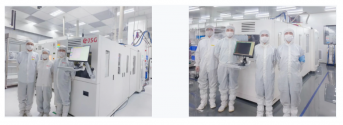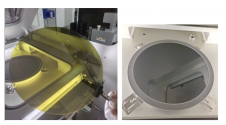D
Deleted member 24525
Guest
Slightly off topic but did anyone else see #havoc trending on Twitter a couple days back?
The article has the implicit assumption that domestic firms using foreign sourcing for a given technology means that no Chinese firm exists which produces said technology commercially, or even that the MIC can't produce it. It's been discussed ad nauseum on this forum that this isn't how it works.
It's possible if not probable that domestic firms do produce these components but their brands are less well established or their products are not quite the same level of quality. We've already been through this loop before with mature node equipment.
Also id recommend taking any article that quotes economics or business professors on matters of technology with a mountain of salt, even if they're Chinese. They are not actually likely to know anything a dedicated amateur couldn't. And in many cases they know much less.
Without actually specifying what components are being bought it's very difficult to gauge the importance of these foreign firms.China’s semiconductor industry can’t quit German optics
"When it comes to the optical systems in its lithography machines, SMEE does not tend to source from foreign firms, according to its website. Instead it uses systems from Chinese optics companies like UP Optotech, Focuslight Technologies, and MLOptic Corp. However, recent documents from these firms in turn showed heavy procurements from German and American suppliers."
UP Optotech’s 2021 annual report revealed that the firm’s top supplier wasn’t Chinese, but in fact the German application-specific integrated circuit company iC-Haus. That year, 11.49% of the company’s procurements came from iC-Haus.
A year later, in its 2022 annual report, UP Optotech directly mentioned the issue of foreign supply chain exposure, writing that independent control and import substitution would be key to solving the “chokehold” (卡脖子) problem. But the same report showed that iC-Haus was the second-biggest supplier for UP Optotech for 2022. UP Optotech’s purchases from the German firm made up 8.5% of its more than $13 million in procurements in 2022."
There's plenty more in that article (showing SMEE's suppliers reliant on German, Japanese and American glass polarizers, precision motors, resins, etc. ). So before developing its semiconductor industry, China must develop its lithography industry, and before developing its lithography industry, China must develop its optics, precision positioning instruments, and materials science industries. Interesting reading.
The article has the implicit assumption that domestic firms using foreign sourcing for a given technology means that no Chinese firm exists which produces said technology commercially, or even that the MIC can't produce it. It's been discussed ad nauseum on this forum that this isn't how it works.
It's possible if not probable that domestic firms do produce these components but their brands are less well established or their products are not quite the same level of quality. We've already been through this loop before with mature node equipment.
Also id recommend taking any article that quotes economics or business professors on matters of technology with a mountain of salt, even if they're Chinese. They are not actually likely to know anything a dedicated amateur couldn't. And in many cases they know much less.


